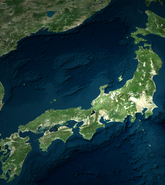NEWARK, Cali. - July 18, 2018 RMS, the leading global risk modeling and analytics firm, announces the release of Version 4.2 of the RMS Probabilistic Terrorism Model (PTM) and the update in RiskLink Version 18 of the RMS Terrorism Scenario Model (TSM). This update will equip terrorism model licensees with the tools they need to address both recent trends in the threat landscape like the rise of lone-wolf attacks and market challenges such as understanding the geography spread of risk within major cities.
The terrorism model update includes the following components:
• Refinements to the Terrorism Target Database for US, UK, and Belgium
• Updates the conditional probability of a terrorist attack (by target category and attack mode) based on attack and threat group data in US, UK, Canada, Italy, Denmark and France.
• Addition of Belgium (Brussels area) - PTM now includes the greater Brussels area, with 228 targets and 2,845 events.
The update to the Terrorism Target Database includes the addition of new targets to reflect the construction of new, high-profile, urban properties as well as the removal of targets that no longer meet the criteria for target selection. There are also refinements in the latitude and longitude coordinates of key attack points.
The increase in lone-wolf attacks at soft targets, such as hotels and transportation hubs, continues to be the focus of Islamic militants, given these targets are relatively unprotected due to their public access. Night clubs and other afterhours venues remain an attractive target, as these establishments are often tightly packed with crowds of people with limited exit routes, therefore enabling mass casualties. For these reasons, RMS expects more plots against these types of targets and has added a specific category to the US PTM and US TSM models.
RMS also has added all hotels under the Trump Organization in New York City and Washington DC to the US terrorism target database as there have been an increased threat of attack to these establishments since Donald Trump assumed the U.S. presidency in 2017.
In the UK and Belgium, the release updates the target database in the greater London area and in Brussels to reflect construction of new targets and removal of targets with diminished risk. The models now cover over 4,600 targets across the US, UK and Belgium; such as foreign consulates, government buildings, train stations and tourist attractions.
Although overall plot and attack frequency remain unchanged in US, UK, Canada, Italy, Denmark, and France, this release updates the conditional probability of various attack types to reflect the current risk landscape. Based on recent plots, the incidence of armed attacks as a preferred mode of attack has increased. To comply with this scenario, we have reduced the relative likelihood of conventional bomb attacks and increased the likelihood of armed attack in these countries.
These model updates are part of the wider launch of Version 18, RMS catastrophe risk management software. Based on the latest science, innovative methodologies and analytics, Version 18 expands global capabilities to deliver new and updated modeling insights to support profitable portfolio growth.
Gordon Woo, Catastrophist, RMS, said: “The global terrorism landscape is continually evolving. Numerous factors contribute to an increased or reduced risk outlook, both in terms of terrorist threat and the preparedness of governments and counter-terrorism initiatives. Persistent intelligence surveillance and diligent law enforcement action make it hard for terrorist plots involving multiple operatives to avoid detection. While this may reduce the risk of large-scale, coordinated attacks, it also increases the risk of lone-wolf attacks.
“We understand that it is important that our clients have the most up-to-date reliable information possible; they know and expect RMS will deliver this, and will continue to support them across all their modeling needs.”
ENDS
Notes to Editors:
What is new in Version 18?
Terrorism: Updated scenario model including updates to targets database for US, UK and Belgium; updates to hazard footprints and changes to the default time of day, to react to changes in peak times across different occupations.
Australia Cyclone: Model update includes the most recent market and meteorological data and lessons learned from recent events, such as Cyclone Yasi in 2011, Cyclone Marcia in 2015 and Cyclone Debbie in 2017. The update also accounts for the rise in properties at risk, with the number of dwellings within 200km of the coast increasing by 15% between 2006 and 2016.
Australia Earthquake: Model update reflecting the latest scientific view of seismic hazard by incorporating data from the 2018 national seismic hazard map from Geoscience Australia. Updated event rates and ground motion models, combined with insight from local experts, provide the most up-to-date view of seismic risk in the country.
Philippines Typhoon: The Philippines is one of the most disaster-prone countries in the world, with around 20 cyclones per year, and eight of these making landfall. New model capturing risk from wind and flooding, coastal storm surge and season precipitation-driven flooding. The model expands the RMS suite of climate modeling solutions to the Philippines.
India Flood: New fully probabilistic Flood model. Flooding is the most significant natural hazard affecting India, comprising of about three-quarters of natural catastrophe losses. The new model combines the latest science with local engineering expertise, with an event set based on 125,000 events across 9,033 catchments throughout India; accounting for monsoon rainfall and expanding areas of impermeable ground in major cities such as Mumbai, Chennai and Delhi.
India Earthquake: Update with high resolution geotechnical information for hazard amplification to differentiate risk. Over a thousand vulnerability functions are included with additional solutions for underwriting key exposures such as industrial facilities, buildings under construction, and marine cargo and specie risks. The financial model includes additional losses from landslide and liquefaction hazards.
South Korea Earthquake: New model model covers ground shaking, liquefaction, and landslide risk, enabling users to comprehensively assess earthquake risk in South Korea. While events in this region are relatively rare, they have the potential to be damaging. In 2016 the Mw 5.4 Gyeongju Earthquake hit and in 2017 the Mw 5.4 Pohang Earthquake occurred close to the city of Pohang, damaging more than 23,000 buildings.
Marine Cargo: Update allowing detailed insight into cargo fragility and exposure accumulation, enabling the identification of vulnerable concentrations of static cargo, the measurement of port accumulations, and the analysis of loss severity for key events.
North America Hurricane: Storm surge update incorporating new methods and data made available since the last U.S. storm surge model update. This enhances risk differentiation between defended and undefended areas prone to storm-surge. Also included are defense assumptions and wave treatment within the storm surge hazard module, as well as basement functionality and first floor height assumptions within the vulnerability module.
Post Loss Amplification: Post Loss Amplification (PLA) has been added for all the updated and new models. PLA captures the potential for losses after severe events to be higher due to the impact of claims inflation, economic demand surge as well as super catastrophes.





